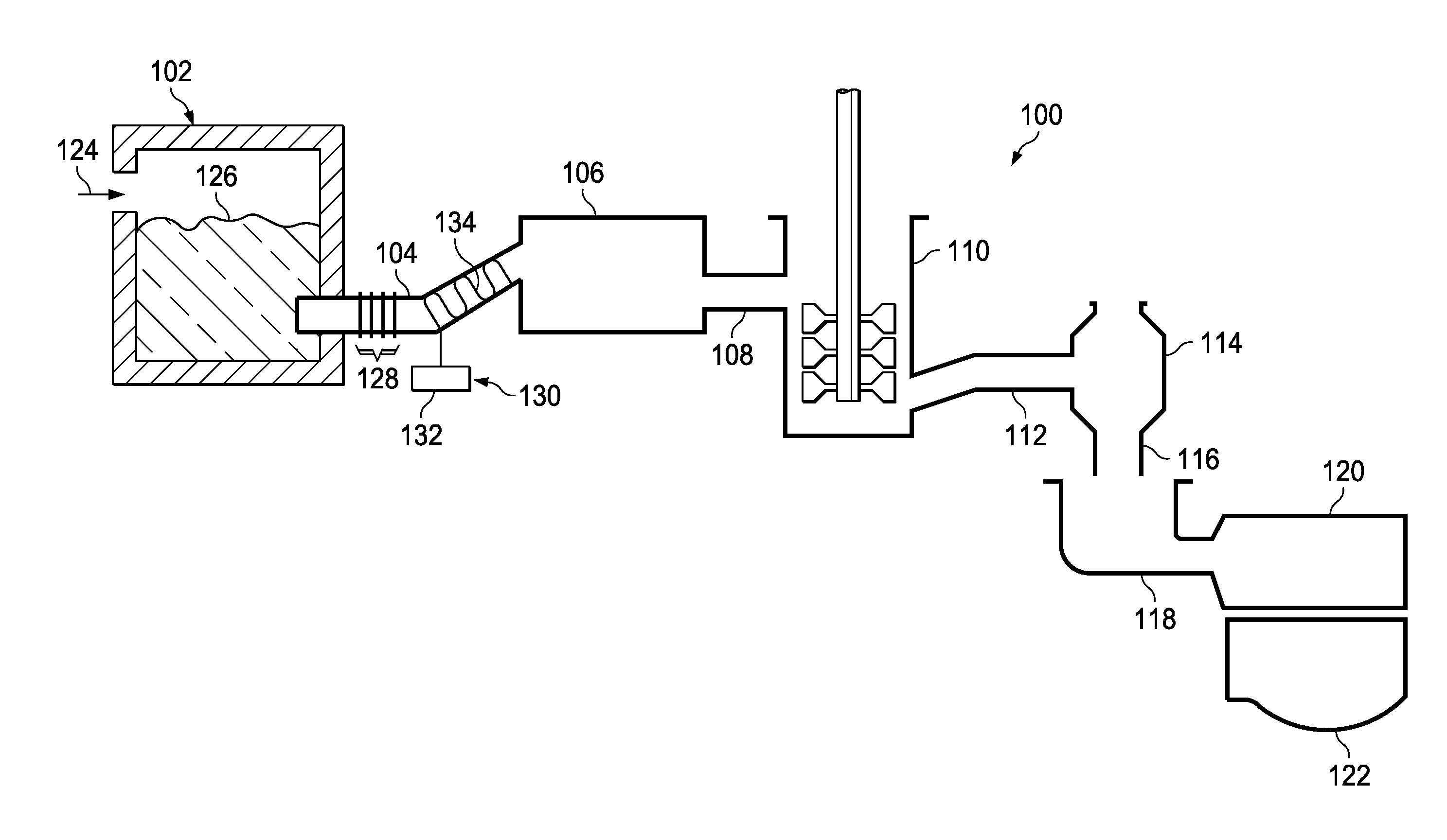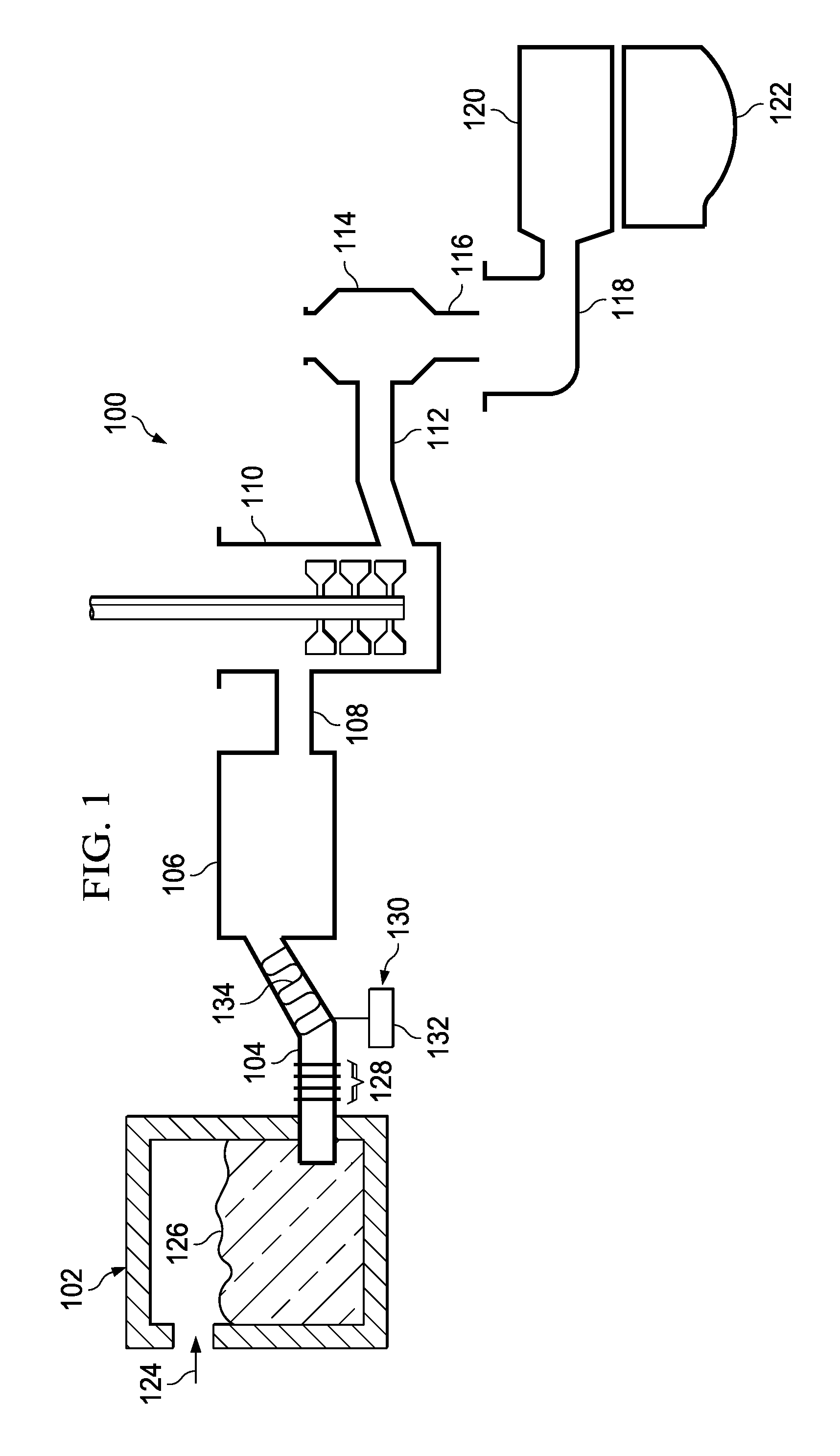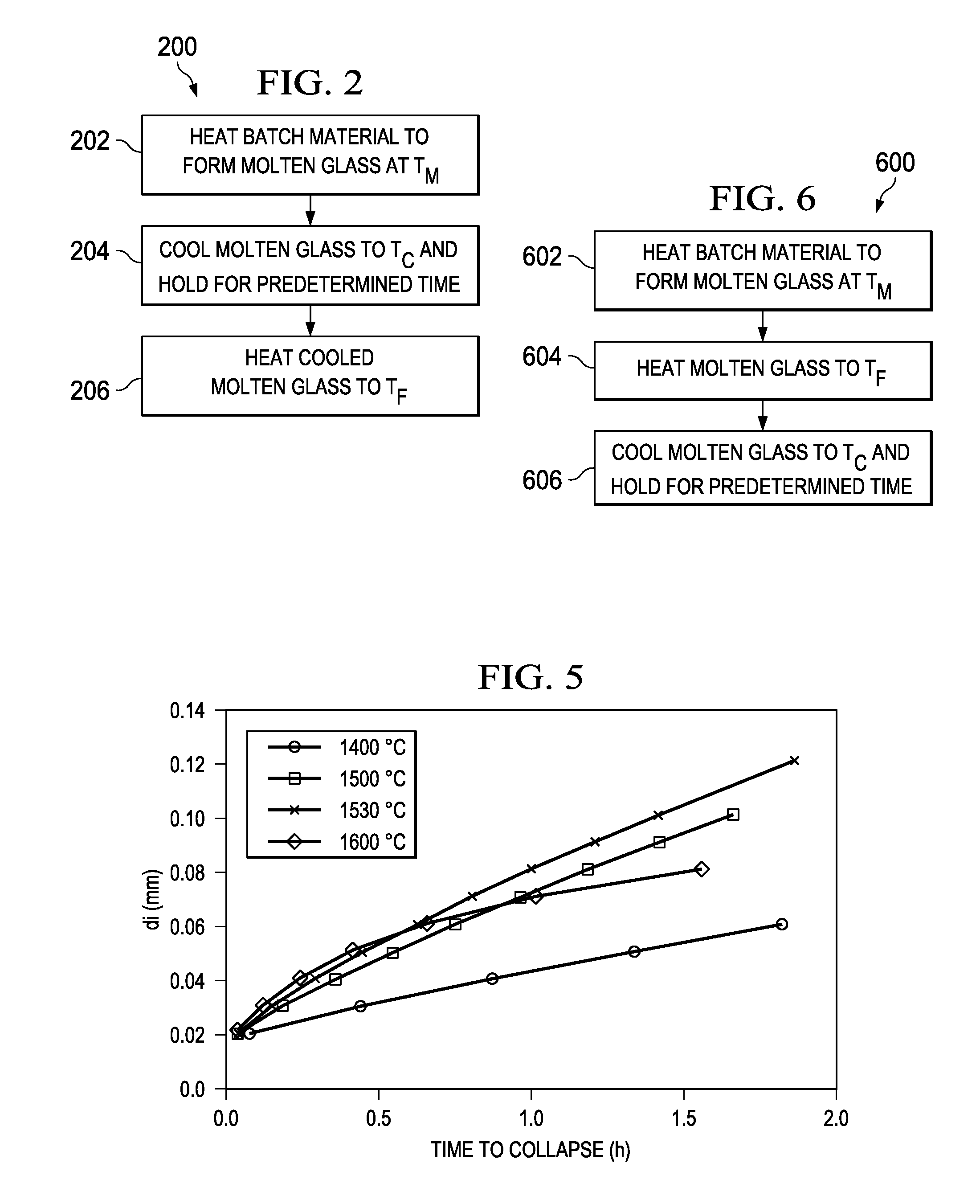Apparatus and method for reducing gaseous inclusions in a glass
a technology of glass and gaseous inclusions, which is applied in the field of glass manufacturing system and a method for reducing gaseous inclusions in glass, can solve the problems of limiting the ability of fining and oxygen re-absorption, affecting the quality of glass, and expensive processing of glass was
- Summary
- Abstract
- Description
- Claims
- Application Information
AI Technical Summary
Benefits of technology
Problems solved by technology
Method used
Image
Examples
Embodiment Construction
[0019]In the following description, a brief discussion about a typical glass making process is provided first and then a detailed discussion is provided to describe details and enable a thorough understanding about several exemplary embodiments of the glass manufacturing system and method used to reduce gaseous inclusions in a glass in accordance with the present invention. However, it will be apparent to one having ordinary skill in the art, having had the benefit of the present disclosure, that the present invention may be practiced in other embodiments that depart from the specific details disclosed herein. Moreover, it will be apparent to one having ordinary skill in the art that descriptions of well-known devices, methods and materials have been omitted so as not to obscure the description of the present invention.
[0020]In a typical glass making process raw feed materials are heated in a furnace (melter, melting vessel) to form a viscous mass (glass melt). Furnaces are generall...
PUM
| Property | Measurement | Unit |
|---|---|---|
| TC | aaaaa | aaaaa |
| TM | aaaaa | aaaaa |
| TM | aaaaa | aaaaa |
Abstract
Description
Claims
Application Information
 Login to View More
Login to View More - R&D
- Intellectual Property
- Life Sciences
- Materials
- Tech Scout
- Unparalleled Data Quality
- Higher Quality Content
- 60% Fewer Hallucinations
Browse by: Latest US Patents, China's latest patents, Technical Efficacy Thesaurus, Application Domain, Technology Topic, Popular Technical Reports.
© 2025 PatSnap. All rights reserved.Legal|Privacy policy|Modern Slavery Act Transparency Statement|Sitemap|About US| Contact US: help@patsnap.com



